Fujifilm FinePix F100fd Review
Review Date: September 18th 2008
Author: Mark Goldstein
Leave a comment about this Review
|
Image Quality
All of the sample images in this Review were taken using the 12M (4000 x 3000) JPEG image size option, which gives an average image size of around 4.5Mb.
The Fujifilm FinePix F100fd produced images of very good quality during the review period. It dealt extremely well with chromatic aberrations, with limited cyan and purple fringing effects appearing only in high contrast situations at the telephoto end of the zoom. The pop-up flash worked well indoors, with no red-eye and adequate exposure. Anti-shake is a feature that sets this camera apart from its competitors and one that works very well when hand-holding the camera in low-light conditions or when using the telephoto end of the zoom range. The images were a little soft straight out of the camera at the default sharpening setting and ideally require further sharpening in an application like Adobe Photoshop (you can't change the in-camera setting if you don't like the default results). The 12 megapixel sensor used in the Fujifilm FinePix F100fd produces noise-free images at ISO 100-400, with limited noise starting to appear at ISO 800. ISO 1600 exhibits quite visible noise, loss of fine detail and colour desaturation, and ISO 3200 is even noisier, although still usable for small prints. The new Dynamic Range option doesn't make too much difference in the majority of shots, even at the maximum 400% setting, with a slightly wider tonal range and less clipping of the highlights. Macro performance is only adequate, allowing you to focus as close as 5cms away from the subject. The night photograph was the biggest disappointment, with the maximum shutter speed of 4 seconds too limiting for effective after-dark photography.
Noise
There are 8 ISO settings available on the Fujifilm FinePix F100fd. Stick to ISO 800 or below if you want to avoid noise. That said, the F100fd makes a cleaner fist of it than most, its performance at ISO 1600 equivalent to some rivals at ISO 800, and ISO 3200 comparable to ISO 1600. Photographers will want to avoid the impression of a building sandstorm and the smeared detail (and resolution drop anyway) provided by ISO 6400 and the frankly unnecessary ISO 12800. Here are some 100% crops which show the noise levels for each ISO setting:
ISO 100 (100% Crop) |
ISO 200 (100% Crop) |
 |
 |
ISO 400 (100% Crop) |
ISO 800 (100% Crop) |
 |
 |
ISO 1600 (100% Crop) |
ISO 3200 (100% Crop) |
 |
 |
ISO 6400 (100% Crop) |
ISO 12800 (100% Crop) |
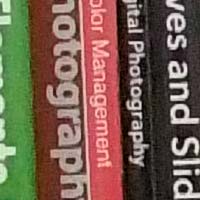 |
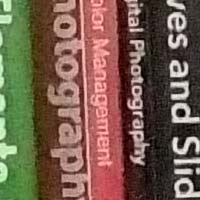 |
File Quality
The Fujifilm FinePix F100fd has 2 different JPEG image quality settings available, with Fine being the highest quality option. Here are some 100% crops which show the quality of the various options, with the file size shown in brackets.
12M
Fine (4.33Mb) (100% Crop) |
12M
Normal (2.83Mb) (100% Crop) |
 |
 |
Sharpening
Here are two 100% crops which have been Saved as Web - Quality 50 in Photoshop. The right-hand image has had some sharpening applied in Photoshop. The out-of-the camera images are perfectly fine at the default sharpening setting, and don't really benefit from any further sharpening in a program like Adobe Photoshop. You can't change the in-camera sharpening level.
Original
(100% Crop) |
Sharpened (100% Crop) |
 |
 |
 |
 |
Chromatic Aberrations
The Fujifilm FinePix F100fd dealt very well with chromatic aberrations during the review, with limited purple and cyan fringing present around the edges of objects in certain high-contrast situations, especially at the telephoto end of the 5x zoom.
Chromatic
Aberrations
1 (100% Crop) |
 |
Macro
The Fujifilm FinePix F100fd offers a Macro setting that allows you to focus on a subject that is 5cms away from the camera when the lens is set to wide-angle. The first image shows how close you can get to the subject (in this case a compact flash card). The second image is a 100% crop.
Macro |
Macro (100% Crop) |
 |
 |
Flash
The flash settings on the Fujifilm FinePix F100fd are Auto, Forced Flash, Suppressed Flash, Slow Synchro, Red-eye Reduction On, Red-eye Reduction Off. These shots of a white coloured wall were taken at a distance of 1.5m.
Flash Off - Wide Angle (28mm) |
Auto Flash - Wide Angle (28mm) |
 |
 |
Flash Off - Telephoto (140mm) |
Auto Flash - Telephoto (140mm) |
 |
 |
And here are some portrait shots. As you can see, neither the Forced Flash or the Red-Eye Reduction options caused any amount of red-eye.
Forced Flash |
Forced Flash (100% Crop) |
 |
 |
Red-Eye Reduction |
Red-Eye Reduction (100% Crop) |
 |
 |
Night Shot
The Fujifilm FinePix F100fd maximum shutter speed is 4 seconds, which is not very good news if you're seriously interested in night photography. The shot below was taken using a shutter speed of 1 second at ISO 100. I've included a 100% crop of the image to show what the quality is like.
Night Shot |
Night Shot (100% Crop) |
 |
 |
Anti Shake
The Fujifilm FinePix F100fd has an anti-shake mechanism, which allows you to take sharp photos at slower shutter speeds than other digital cameras. To test this, I took 2 handheld shots of the same subject with the same settings. The first shot was taken with anti shake turned off, the second with it turned on. Here is a 100% crop of the image to show the results. As you can see, with anti shake turned on, the images are much sharper than with anti shake turned off. This feature really does seem to make a difference and could mean capturing a successful, sharp shot or missing the opportunity altogether.
| Shutter Speed / Focal Length | Anti Shake Off (100% Crop) |
Anti Shake On (100% Crop) |
| 1/13th / 28mm |  |
 |
| 1/6th / 140mm | 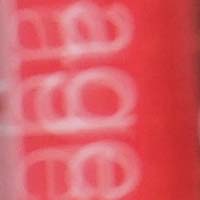 |
 |
Dynamic Range
The Fujifilm FinePix F100fd offers a Dynamic Range option via the F-Mode menu, which promises to broaden the tonal rendition in photos with both bright highlights and dark shadows. The default setting is Auto, with 100%, 200% and 400% options also available. I took four consecutive shots at each setting of Tower Bridge on a bright, sunny day. Studying the histogram for each image revealed a slightly wider tonal range with a shift towards the left/shadows, but nothing too obvious.
Auto |
100% |
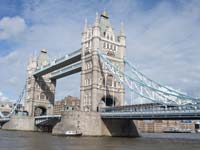 |
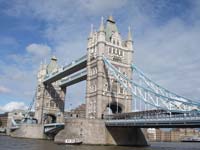 |
| 200% | 400% |
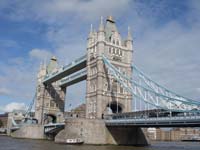 |
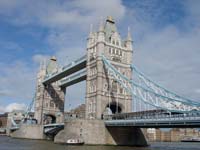 |
|
![]() PhotographyBLOG
is a member of the DIWA
organisation. Our test results for the Fujifilm FinePix F100fd have
been submitted to DIWA
for comparison with test results for different samples of
the same camera model supplied by other DIWA
member sites.
PhotographyBLOG
is a member of the DIWA
organisation. Our test results for the Fujifilm FinePix F100fd have
been submitted to DIWA
for comparison with test results for different samples of
the same camera model supplied by other DIWA
member sites.
